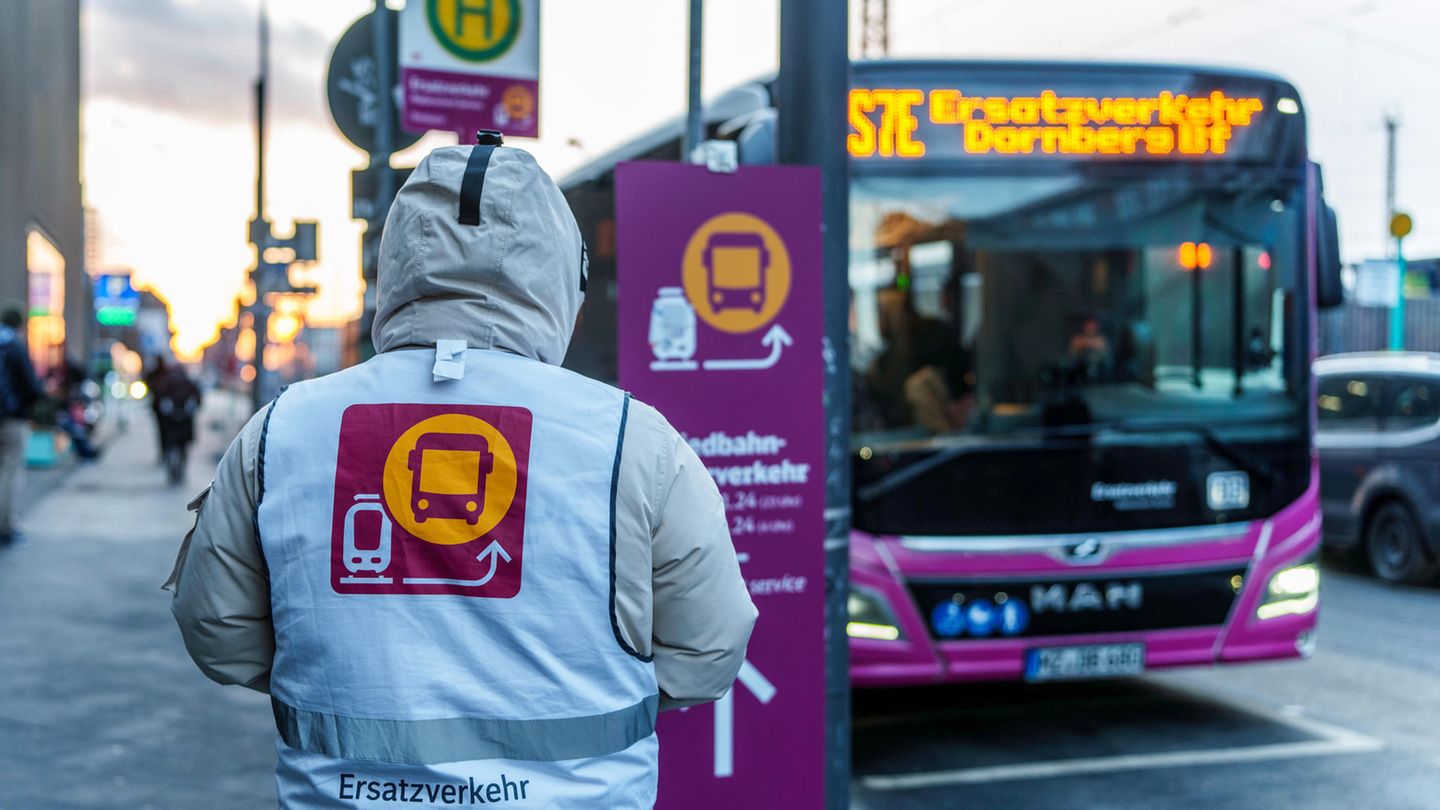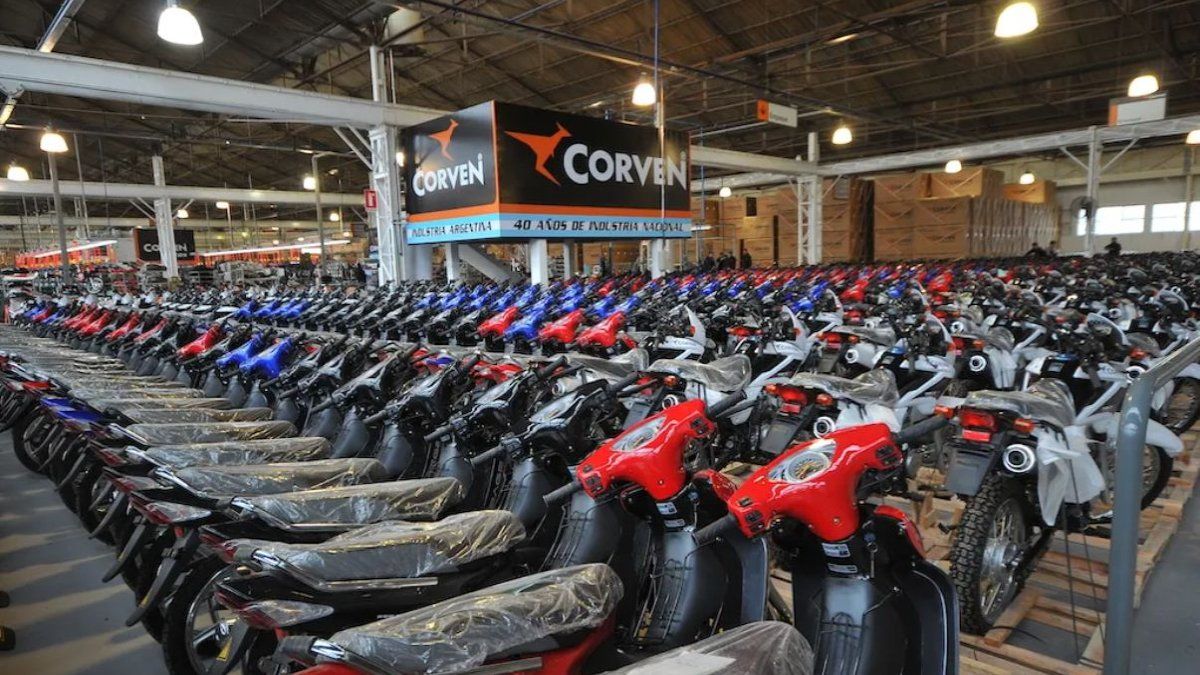The railway wants to completely renovate the Riedbahn route between Frankfurt and Mannheim. She celebrates that everything went well at the dress rehearsal – but a lot went wrong again
This article is adapted from the business magazine Capital and is available here for ten days. Afterwards it will only be available to read at again. Capital belongs like that star to RTL Germany.
You have to hand it to Deutsche Bahn. She knows how to stage herself. To set the mood for the press conference, there is a short video, actually only intended for internal use, in which DB employees talk about how they grind themselves out for the job. One person, for example, reports nightmares in which he cannot find the stops for the replacement transport. It’s about the renovation of the Riedbahn, the acid test for Deutsche Bahn’s largest renovation project, which is scheduled to start this summer, one day after the European Championship final. The task summarizes the video in a sentence that appears large. “84.7 million believe we are failing.”
So the railway against the rest of the republic. It couldn’t be more dramatic. Accordingly, the railway is doing its best to show that it can do it: namely, to get one of the busiest and most disruptive routes back in shape in five months, so that in the end the whole of Germany travels more punctually. That’s why DB did something unusual this January.
She has already rehearsed the general renovation of the Riedbahn, a 70 kilometer long route between Frankfurt am Main and Mannheim, on a small scale. Not just in the Metaverse or with a digital twin, she actually dug and built like hell. Three weeks were planned for a nine kilometer route.
200 people and helicopters for Deutsche Bahn
The result is impressive. On the one hand. Construction took place day and night, in snow and ice, by 200 people in two shifts, and 60 large machines were at work at the same time, says Berthold Huber, DB Infrastructure Director, at the press conference. Even helicopters were used to set up masts in the snow, true to the motto that what works in Canada also works here.
“We managed 400 percent more construction volume per unit of time than usual,” says Huber, visibly proud. And counts: 23 switches, 3,100 foundations for sound barriers, new control and safety technology, signal masts and cable carriers over a distance of a good 9 kilometers. “We accomplished everything we set out to do,” summarizes Huber.
Bahn pays bonuses to construction companies for on-time completion
From the railway’s perspective, this was possible because, unlike usual, they worked with the construction companies to think about how to do it as quickly as possible, i.e. in a “partnership” manner. For example, machines were withdrawn from other construction sites abroad to be used on the Riedbahn, and there were bonuses for completing them on time.
On the other hand, the dress rehearsal reveals old problems. Because instead of three weeks as announced, the railway ended up needing four weeks to reopen the route. The reason for this: “An unusually severe onset of winter with freezing rain” and “two GDL strikes”, the DB excuses the delay and raises serious doubts with these explanations. The fact that winter falls in January is not new to the DB either. The strike had been announced. Couldn’t that have been taken into account?
There was a buffer, explains Huber. But then one thing led to another: a sodden dam that had to be compacted, a complicated process of putting the new technology back into operation. The necessary test and stress runs had to be postponed. And hey presto, two days turned into seven days late.
The railway deserves criticism here twice, on the one hand because the buffer was too small, and on the other hand for its confusing communication: the date for recommissioning was postponed first once, then twice, then three times. On Sunday night, January 28th, at four in the morning, the DB finally reopened the Frankfurt-Mannheim route. Too bad that this salami tactic is a fatal reminder of what millions of passengers know only too well from their journeys with the DB. The station display promises a delay of five minutes, then 20 minutes and in the end the train is canceled completely.
Problems with replacement traffic on the Riedbahn
The railway is also satisfied with replacement traffic (“diversion traffic”) and refers to customer surveys. DB Regional boss Evelyn Palla praised the “new and innovative replacement service” that the railway had organized for the 16,000 passengers who otherwise travel on the route. These buses took passengers to their destination “reliably and particularly punctually.” Also “particularly comfortable”.
It is true that the railway has purchased 75 new buses with WiFi and USB charging sockets, which has long been standard for its competitor Flixbus. Palla has rented just as many. But when asked, the DB Regional boss admits what didn’t go so well: Yes, there were bus drivers who didn’t know how to drive. Yes, the stops and buses were not always easy to find for passengers – despite the eye-catching “traffic purple bus paintwork”. Yes, the buses often drove around almost empty. Yes, in the fourth extra week there was chaos with the timetable.
In a word: needs improvement. But that’s ultimately what the dress rehearsal is there for: to show what’s still missing. In the summer there should be more buses of our own, making them easier to find. The railway is currently urgently looking for bus drivers; the recruitment rate is 60 percent, and more than 100 are still missing. According to its own information, the railway needs 400 bus drivers plus reserves for the Riedbahn renovation. DB is now also looking abroad, especially in Romania, Spain and Croatia. As a passenger, you hope for multilingual navigation systems.
Costs for renovating the Riedbahn are exploding
There is also the cost explosion that is already looming: according to the DB planning round for 2022, the general renovation of the route between Frankfurt am Main and Mannheim will now cost 1.3 billion euros instead of the original 518 million – i.e. 153 percent more. A mere 18.6 million euros per kilometer.
Railway board member Huber justifies the increase with additional services. The new control and safety technology and the construction of the future train stations were added. However, this is not new, says Peter Westenberger, managing director of the “Die Güterbahnen” association. These measures were among the binding goals of the general renovation from the start. It is unclear why the costs are only now finding their way into the overall calculation. If this example were followed, then the money from the federal government would not be enough, not to mention that there would be little or nothing left for the urgently needed new construction and expansion.
Conclusion: If the railway doesn’t want to fail the citizens again, it needs more transparency, honesty and better management. Ultimately, the Riedbahn should be the “blueprint” for all 40 further general renovations. “It’s showtime,” railway boss Richard Lutz recently shouted to Federal Transport Minister Volker Wissing on stage at Berlin’s Futurium when they celebrated their new Infra-Go company, which has to implement the project. And promised: “We will deliver.” Things get serious on July 15th. Please don’t fail, one can only hope.
Source: Stern




